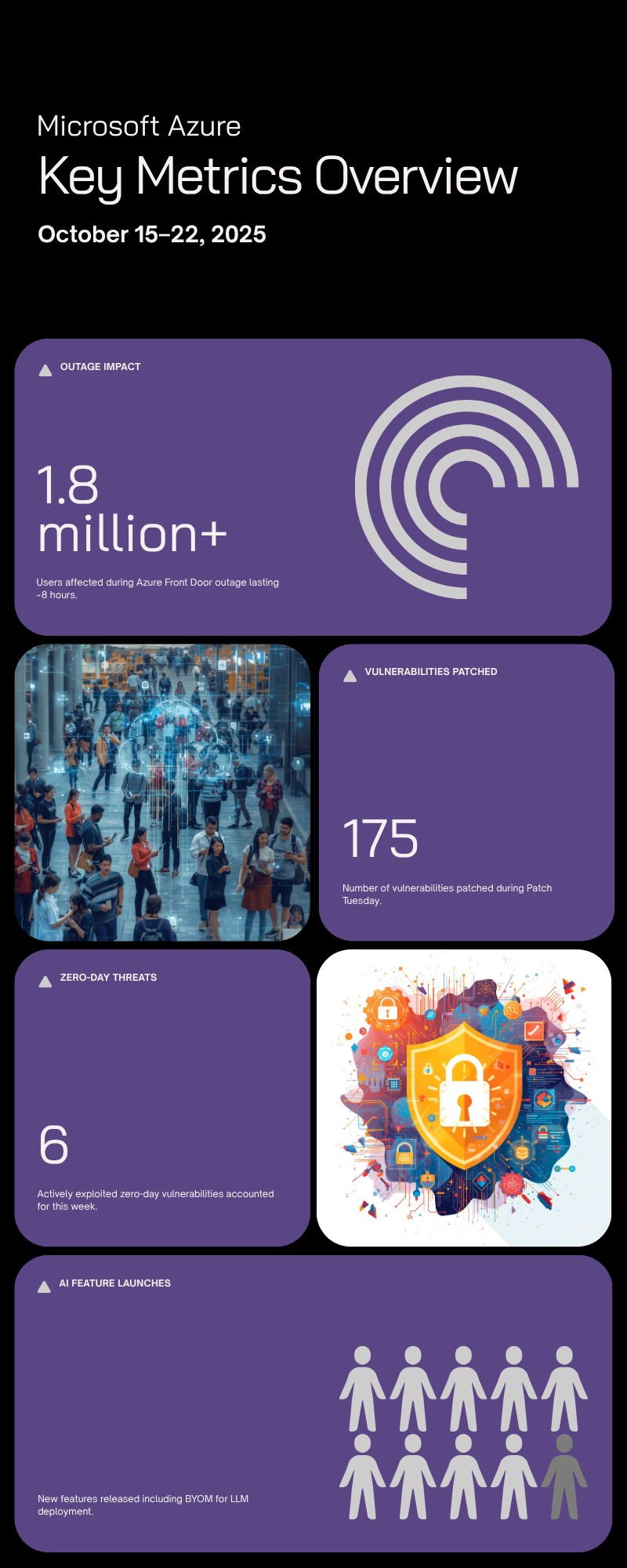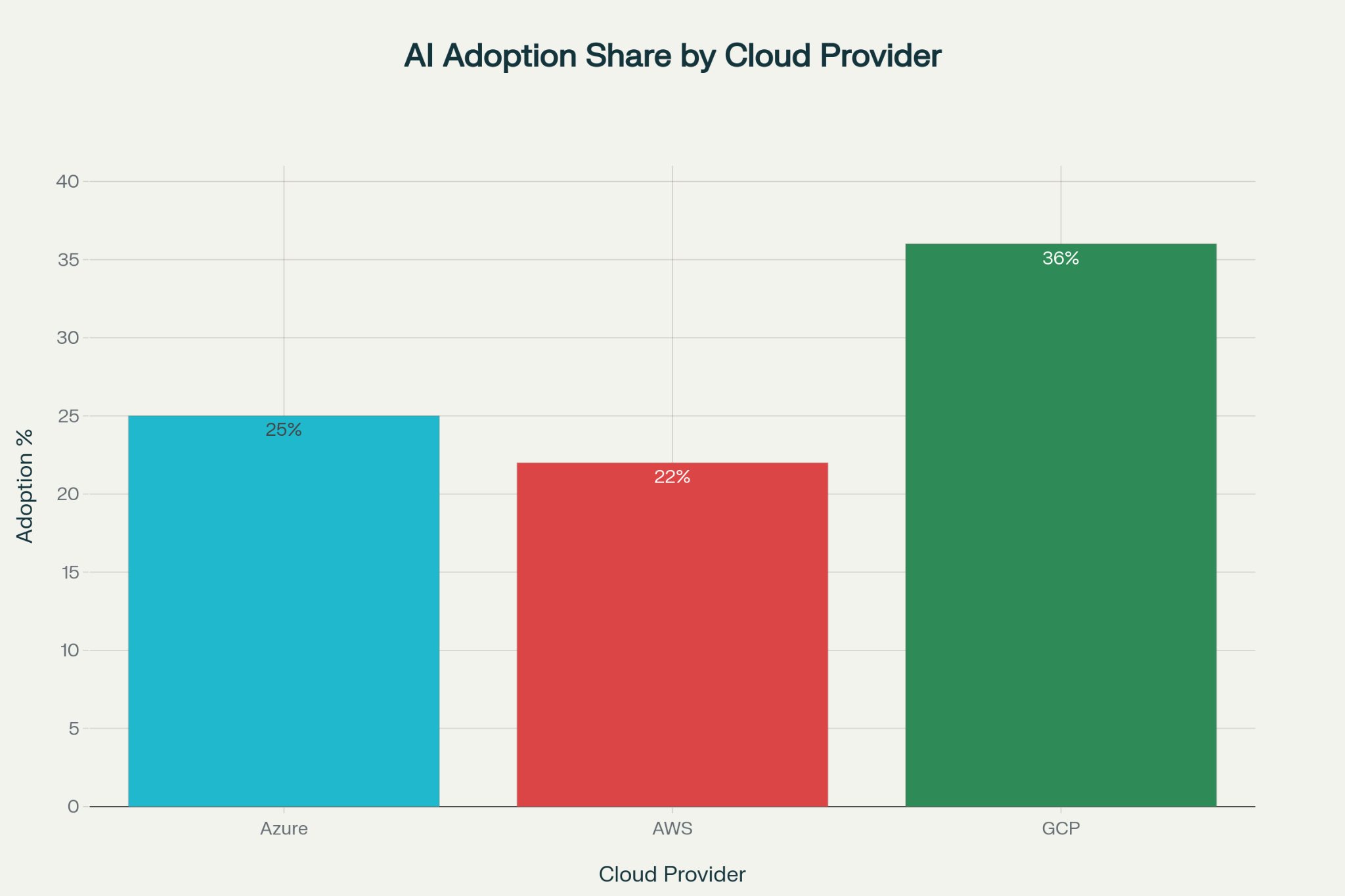
The past week on Microsoft Azure (October 15–22, 2025) showcased the platform’s ongoing evolution from reactive resilience to proactive scalability. After a turbulent start to October with the Azure Front Door outage (Oct 9), the ecosystem shifted focus toward recovery hardening, partner API modernization, and performance scaling across databases and AI services.
Enterprises saw value from updates that redefined cloud reliability and flexibility: smarter database scaling, zero-downtime migration, Bring Your Own Model (BYOM) capabilities for Azure AI, and sustained focus on self-healing load architectures.

Key Numbers:
Azure’s latest week of activity aligns with a cross-industry resilience imperative triggered by the recent AWS US-East-1 and Azure network incidents. The message across cloud ecosystems is clear: downtime mitigation is no longer optional—it’s part of architectural design.
Microsoft is banking on AI and automation-driven recovery as a core differentiator. The new “Resilience-as-Code” mechanisms in Azure Chaos Studio and automated cache purge routines in Azure Front Door reveal how the company is converging reliability with intelligent observability.
Analysts also note a visible trend—multi-cloud organizations are now running Azure workloads in active-active configurations with AWS and GCP. Azure’s tighter data residency controls and new Indian-region expansions (expected Q1 2026) make hybrid orchestration more compelling than ever.
Impact: Enterprise database admins gain efficiency, faster I/O scaling, and improved recovery time benchmarks. More info
Azure now empowers enterprises to deploy their private models natively in AI Composer. The Bring Your Own Model feature integrates seamlessly with Azure Translator APIs and Custom QnA Agent Framework, allowing private AI inference that respects enterprise data boundaries.
Why it matters:
With the rapid shift to regulatory AI compliance, this update ensures on-premise-level model control—meeting upcoming EU AI Act transparency standards. Explore AI Services Updates

The October Partner Center release introduced new access tokens for distributors and added the Run SAP on Microsoft Cloud specialization. Microsoft’s updated API flow enforces stricter authentication cycles to tighten access governance.
For Partners: Transition audits are mandatory before November 15, 2025. Microsoft Partner Center
After the Azure Front Door (AFD) outage on October 9—caused by cache overload during routing maintenance—Microsoft implemented permanent load balancing safeguards. Azure now leverages automated cache evictions and endpoint health telemetry to anticipate recursive failures.
Three action points for enterprise teams:
Looking ahead to Microsoft Ignite 2025 (Nov 3–7), Azure Kubernetes Service (AKS) updates promise enhanced autoscaling with GPU awareness and service mesh self-healing — critical capabilities for AI-heavy workloads and enterprise-grade microservices deployment.
October 2025’s second half spotlighted Azure’s dual focus on post-incident resilience and innovative capability delivery under pressure. By embedding intelligence into infrastructure and elevating partner compliance frameworks, Microsoft is positioning Azure as a premier cloud provider with a strong eye on reliability, AI-first modernization, and security assurance—key pillars for C-suite confidence in a volatile market.
Traditional cloud commitments often lock you into long-term contracts that limit flexibility and increase financial risk. Usage.ai’s Flex Commitment Program offers a dynamic, risk-managed solution that maximizes savings while providing unmatched flexibility.
How It Works: Usage.ai analyzes your cloud usage, recommends optimal commitments, and automatically executes purchases—no code changes or downtime needed. All active commitments are visible in your dashboard for complete transparency.
Why Choose Flex Commitments?
Enjoy the cost benefits of long-term commitments paired with the security to adapt as your usage evolves, saving up to 57% on cloud spend—effortlessly.
Get Started:
Log in to Usage.ai, connect your AWS environment, and receive a free, automated analysis of your discount coverage and regional workload cost optimization strategies. This onboarding process typically takes between 5 and 10 minutes.
Ready to maximize profitability by automating your cloud commitment spend?
Share this post
